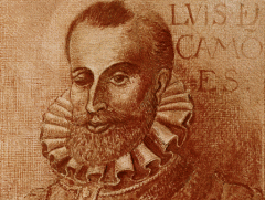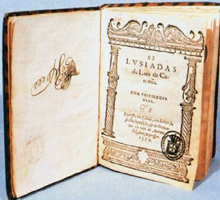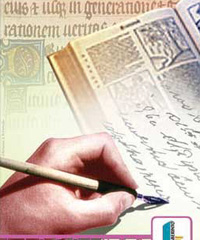The Portuguese make a handwritten copy of a poem by Luís de Camões
The initiative of the people from the small town of Trancoso, located in the North of Portugal, became a declaration of love to the national poet Luís de Camões. They began to copy his epic work “The Lusiads”, which consists of 1102 stanzas and almost 55 000 words, by hand.

The fourth canto of the poem came first. It depicts the triumphant struggle of the Portuguese for independence against Castilian conquerors and the beginning of the Age of Discovery. The very title “The Lusiads” means “the Portuguese”; it is traced back to the name of the Lusa tribe, which inhabited the area. One hundred Trancosians took part in copying the fourth canto.
Each of them was to copy only one strophe. Though every person has her own handwriting, the text proved to be fairly legible. It is obvious that the copyists tried to do their best, putting all their love into every letter.
Special attention was paid to the first canto known to all Portuguese from early childhood just like the first lines of Pushkin’s “Ruslan and Lyudmila” is known to every Russian,

“By an arc of sea a green oak stands;
to the oak a chain of gold is tied;
and at the chain’s end night and day
a learnèd cat walks round and round.
Rightwards he goes, and sings a song;
leftwards, a fairy tale he tells…”
(Translated by Roger Clarke, 2009)
The Lusiads starts with,
“ Arms and the Heroes, who from Lisbon's shore,
Thro' seas where sail was never spread before,
Beyond where Ceylon lifts her spicy breast,
And waves her woods above the wat'ry waste,
With prowess more than human forc'd their way
To the fair kingdoms of the rising day:
What wars they wag'd, what seas, what dangers pass'd,
What glorious empire crown'd their toils at last,
Vent'rous I sing, on soaring pinions borne,
And all my country's wars the song adorn;”
(Translated by William Julius Mickle, 1877)
With these words, Luís de Camões begins his narration about the toils of history his motherland had to face, giving the detailed description of Vasco da Gama’s voyage to India.

The well-known politicians and public figures will be offered to copy the first canto.
Santus Costa, Head of Municipal Enterprise, the inspirer of the project, says, “to copy The Lusiads is an important cultural and social event. Thanks to our initiative many people will be able to pay homage to this cultural symbol of our country, which reveals both tragic and happy moments of our history, and, what is most important, helps to cherish and preserve our native language.”
The aim of the event is to issue a unique edition, the most unusual version of the poem during its four-century existence. “Myriads of handwritings and characters of different people will be gathered in one volume, Santus Costa said, and it is wonderful: people copy the great work of literature by hand as Luís de Camões did in the 16th century.” The handwritten poem will be kept in the Municipal Library of Trancoso. Moreover, its copy will be sent to the Lisbon National Library.
Source: Andrei Polyakov, ITAR-TASS (www.itar-tass.com)
P.S. We are glad to inform you that the National Union of Calligraphers of Russia has launched a grandiose project: a handwritten copy of the Constitution of the Russian Federation. The first handwritten version of Russia’s Basic Law will be displayed at the International Exhibition of Calligraphy in Saint Petersburg on September 16-21.
For the largest part ill handwriting in the world is caused by hurry.
(Lewis Carroll)



